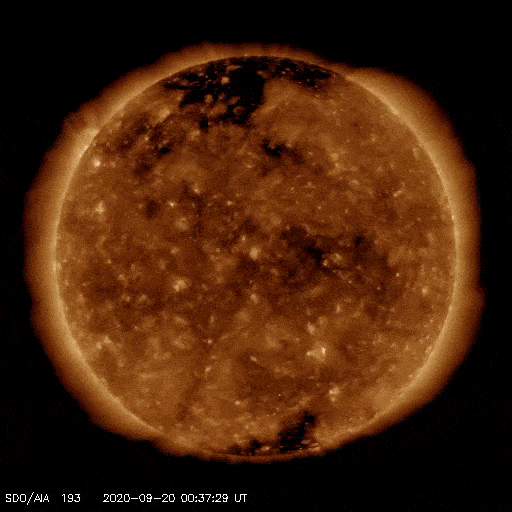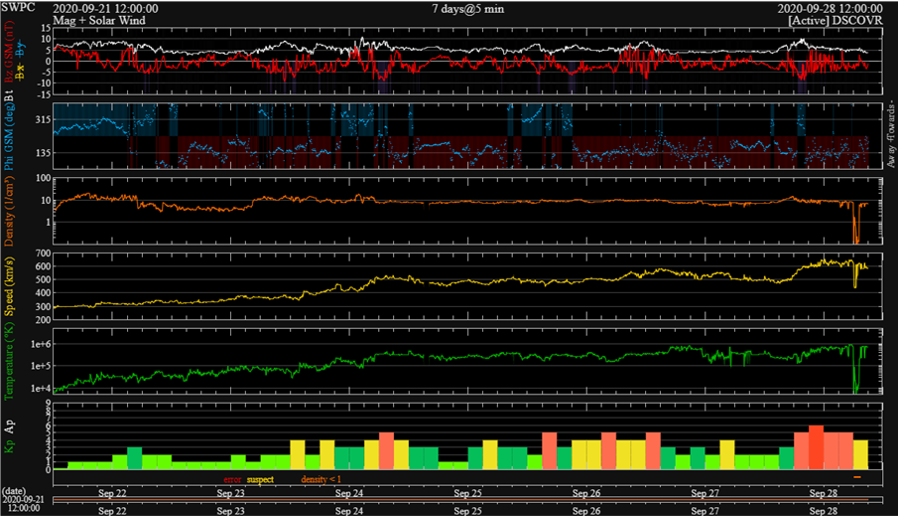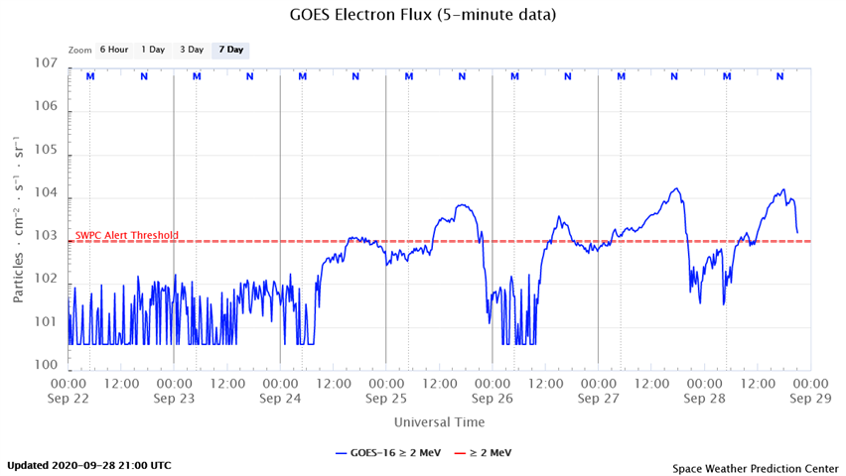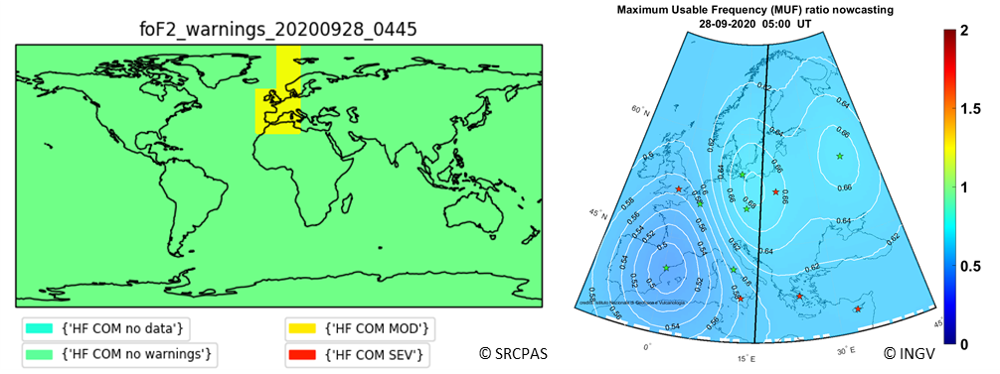Geomagnetic activity reached moderate storming conditions on 27 September following the arrival of enhanced wind streams related to an extension from the northern positive polarity polar coronal hole (CH). The geomagnetic storm continued already elevated levels of geomagnetic activity that started on 24 September following the arrival of high speed wind streams associated with other extensions from the northern polar CH. These extensions can be seen in the extreme ultraviolet images underneath taken by SDO/AIA 193 as dark structures emanating from the northern polar CH. The bright region that can be seen to the east of the most obvious extension is active region NOAA 2773, a mostly spotless region that did produce a small C1 flare peaking early on 26 September.

Positive polarity means that the (open) magnetic field lines from the coronal hole are directed away from the Sun (blue curve underneath), with values around 135 degrees near Earth. Solar wind speed (yellow curve) has been gradually rising from values near 360 km/s on 23 September to values peaking around 650 km/s late on 27 September (DSCOVR). The estimated planetary K index (Kp) as provided by NOAA is at the bottom of the graph. "0" means quiet, "9" means extremely severe geomagnetic storming. The observed moderate storm means Kp reached the value 6, as observed during the 21-24UT interval on 27 September. In Dourbes (Belgium), the geomagnetic activity reached only minor storming conditions (K=5).

In a previous STCE newsitem, it was pointed out that so far in 2020, there have been only 4 days with geomagnetic activity reaching minor storm levels. With last week's activity, that number has more than doubled and we now even have a day with moderate storming, on 27 September. That day also has the strongest negative Dst index (WDC Kyoto; see this STCE newsitem), with preliminary Dst values near -81 nT. Aside sparkling aurora (polar lights) near polar latitudes, these persistent high speed wind streams were also the source of elevated levels of energetic (energies of more than 2 MeV) electrons with daily maxima above the alert threshold of 1000 pfu (particle flux units; 1 pfu = 1 electron / cm2 s sr) from 24 September onwards as measured by the GOES satellites, even reaching high levels from 27 September (about 16.000 pfu) onwards. High levels of these electrons can lead to electrostatic discharges (ESD) resulting in malfunctions of a satellite and occasionally even in the satellite failure (see e.g. this reference example). Even after the solar wind speed has decreased to nominal values, high levels of energetic electrons can still persist for several days.

The geomagnetic storm also triggered a depression of the maximum usable frequency (MUF). The MUF is the highest HF radio frequency (i.e. between 3 and 30 MHz) that can be used for communication via reflection thru the ionosphere in a given direction. A depression of the MUF prohibits aircraft from accessing the highest frequencies normally available to them. These MUF depressions usually occur after the end of the main phase of geomagnetic storms and can last for several hours. The values are calculated against a 30-day running median, and advisories for the civil aviation are issued by participating space weather consortia such as PECASUS. This issuing happens when depressions in the MUF of respectively 30 percent or more ("moderate") and 50 percent or more ("severe") are observed over a certain region in the world. Hence, in the wake of the 27 September geomagnetic storm, such "post-storm depressions" were observed at mid-to-high latitudes over Europe and advisories ("moderate") to the civil aviation were sent on 28 September.






